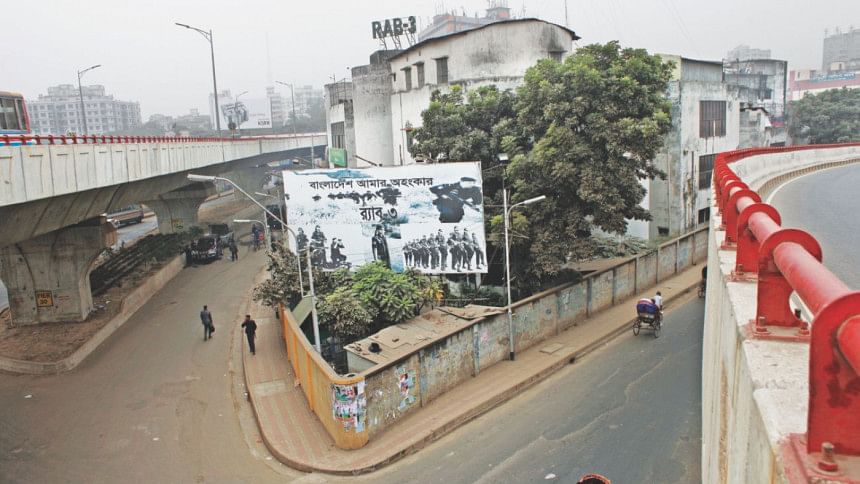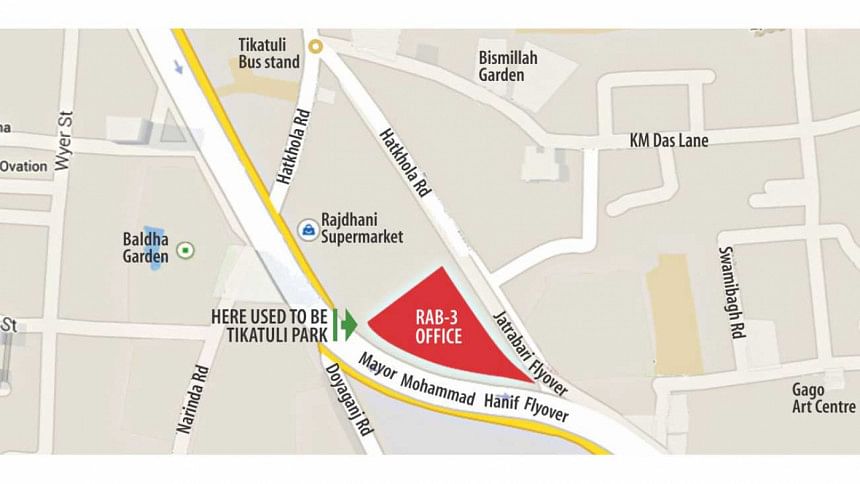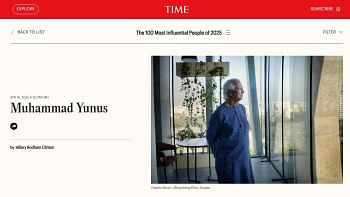Oasis turns into just another stack of concrete


Tikatuli Park, which was once an oasis for the people living in Tikatuli of the capital, is just a memory now for residents who had lived there about 15 years back.
Children played in the swings and slides there, while adults had an open space for their daily exercise.
In the late 90s, a community centre was built on the premises of the park and it later became the office of Rapid Action Battalion (Rab)-3.
Nowadays, one can no longer recognise the park.
"I often played football with my friends in the park," said 45-year-old Nazrul Islam.
Joynul Abedin, 55, who spent his childhood in Tikatuli, said they grew up playing in the park but their grandchildren do not even know that it existed.
Abedin said beside the park there used to be a glass factory and staff quarters. Children living in the staff quarters, on KM Das Lane and in Tikatuli sweeper colony mainly played in the park.
As there is no longer a park, children living in the area are forced to play on the streets.
Tanvir Ahmed, a class IX student, Md Sajid Alam, a class III student, and Md Fahim Hossain, a class IV student, were seen playing badminton on KM Das Lane.

They said there is no open space for them to play and so they play on the road.
Although there is a field, belonging to Brothers Union Club, about half a kilometre away, they said they rarely go to the field.
Ansar Ali Khan, chief executive officer of Dhaka South City Corporation, said the community centre and other establishments were built on the park before the bifurcation of the city in November 2011.
Khalid Ahmed, the city corporation's chief estate officer, said they have rented out the community centre to Rab.

 For all latest news, follow The Daily Star's Google News channel.
For all latest news, follow The Daily Star's Google News channel. 



Comments